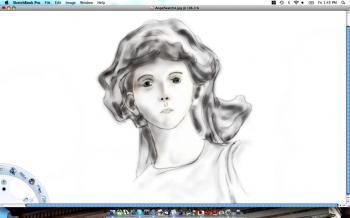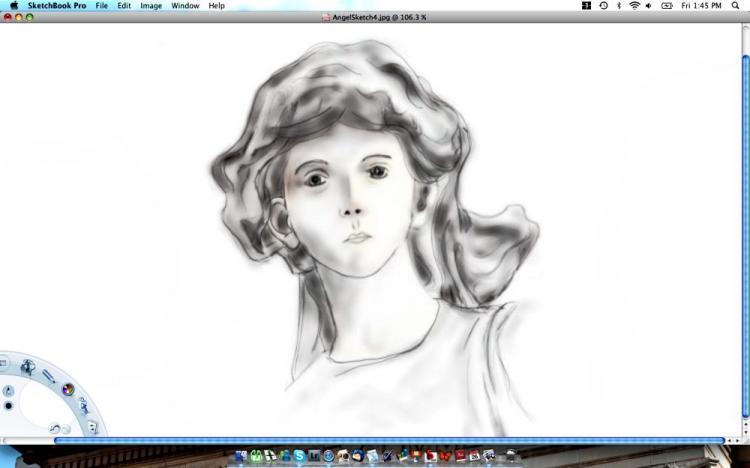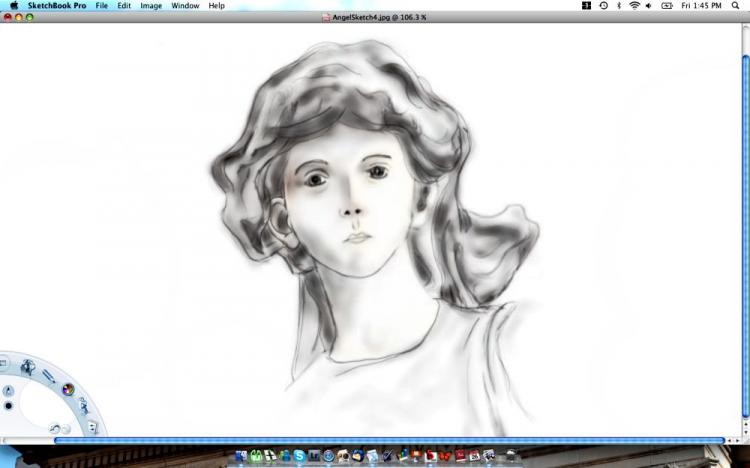In the community of graphic designers, Autodesk is a household name. The company develops several of the leading programs for 3-D design, graphics, and CG motion pictures.
Autodesk programs played a part in creating movies such as Madagascar 2 and The Hulk, as well as games such as the new Prince of Persia and the upcoming installment of Halo.
Among their list of products is Sketchbook Pro 2010. As the name would suggest, the program sets out to emulate the feel of a sketchbook and offers artists a clean environment to sketch, paint, and draw nearly anything.
Sketchbook Pro is made to resemble an artist’s sketchbook both in form and in feel. It is specially designed to work with a pen tablet or a tablet computer—although it can also be used with a mouse or trackpad.
At just $100 the program is surprisingly inexpensive, given the cost of similar programs on the market.
Sketchbook Pro is also very small so it runs fast, installation is easy, and it takes up little room on the computer. On my Mac, Sketchbook Pro 2010 took up only 46.6 MB (about the size of 10 pictures).
An Overview
When I opened the program for the first time what really stood out was how easy it was to use. It is designed so that even a person with little computer skill can quickly learn it.
The workspace consists of a full screen drawing mat and a small toolbar in the lower corner.
I can honestly say that Sketchbook Pro 2010 is the easiest drawing program I’ve ever used.
The program keeps only the necessities, leaving only a compact and easily navigable workspace. A user can literally play with every tool and function it has to offer in a matter of minutes.
Some users who are accustomed to programs such as Photoshop or Corel Draw may at first miss the seemingly endless list of tools, yet the lack of such tools is actually a strength for Sketchbook.
Instead of offering a book of functions Sketchbook Pro culls from the traditional tools an artist would use and makes them as realistic feeling as possible.
A Look at the Tools
Sketchbook Pro offers a handful of brushes—basics, such as a pen, pencil, airbrush, and marker. What makes them unique is how the tools function in the program. They truly work and feel just as the real tools would.
For starters, they are all pressure sensitive, so the harder you press, the darker and broader the lines will be.
They also have a strikingly realistic look to them. The pencil tool makes thinner, lighter lines. The pen tool is similar, yet darker. The airbrush has a soft, accurate spray that is wonderful for shading.
Line thickness and mark size can also be adjusted quickly and easily. Bars for color can also be opened and accessed quickly.
Since Sketchbook Pro is made to work with a pen tablet, the user may never need to touch the keyboard while using it. Most tools are placed on screen and can be adjusted by a touch of the cursor. This not only helps the user save time, but also lets you focus your concentration on your creation, rather than the program itself.
A personal favorite in the tools section are the ruler and ellipses tools. With these functions, the user sets the size and angle of the circle or line. Once the measurements are in and you begin drawing, the ink will lock onto the border of the ruler, regardless of how far the cursor is from the line.
So far, Sketchbook Pro 2010 is the first program I’ve come across that uses the ruler and ellipses tools in this way. I found it to be very accurate and easy to use.
The eraser tools are also nice. One is a hard eraser, which completely removes any lines or errors. The other is a soft eraser that gradually erases a spot by making it increasingly lighter. This is helpful when blending or lightening up a heavily shadowed area.
Beyond the Basics
In addition to the basic tools, there are also some that go beyond what a pen and paper artist can do. Among these is the ability to create custom brushes.
Using this function, the user could, for example, draw an intricate feather or leaf. Once finished, the feather can be saved as a custom brush. It can then be assigned to a pen tip that will replicate your design as you see fit.
This could allow the user to create a whole wing covered in intricate feathers or a whole tree full of detailed leaves.
These custom brushes can also be saved and shared with other Sketchbook Pro users.
Another valuable function is the layering tool, which gives added creative power to the program. This function is common in several graphic and drawing programs, perhaps because it is so useful.
The tool allows the user to draw or paint over or under your picture in a separate layer that will not alter the original image.
Users can also create new layers quickly by using flicks on a tablet, or by clicking on the layers tool and moving the cursor up or down.
Of course, Sketchbook is also equipped with the standard “undo, redo” tools, which can undo an error, or redo anything you didn’t mean to cancel out.
In a Nutshell
Users who are familiar with the Autodesk name know it to be a seal of quality for design software. Sketchbook Pro 2010 lives up to this reputation, and is already a well known product in the world of product design and digital art.
This program is not meant to be a replacement for one-stop-shops such as Photoshop. Rather, Sketchbook focuses on one specific function and does it very well.
The simplicity of this program is a major strongpoint of Sketchbook Pro, as it gives artists the space to simply draw and not have to think of anything technical.
Yet where this program really shines is in the effectiveness and realistic feel of its tools.
It does a great job emulating tools that artists have used and relied on for thousands of years, and combines them with the functions that are needed by modern digital artists.
[etDetailsBox SCORECARD]
Effectiveness: A
Interface: A+
Usability: A+
Installation: A+
Overall: A
[/etDetailsBox]




![[LIVE NOW] Media Raise Questions About Controversial Cloud Seeding After Middle East Floods](/_next/image?url=https%3A%2F%2Fimg.theepochtimes.com%2Fassets%2Fuploads%2F2024%2F04%2F23%2Fid5635847-CR-TN_REC_0424-1080x720.jpg&w=1200&q=75)


![[LIVE 4/26 at 10:30AM ET] New Push Started for Global Digital Currencies](/_next/image?url=https%3A%2F%2Fimg.theepochtimes.com%2Fassets%2Fuploads%2F2024%2F04%2F19%2Fid5633115-0426-1080x720.jpg&w=1200&q=75)
Friends Read Free